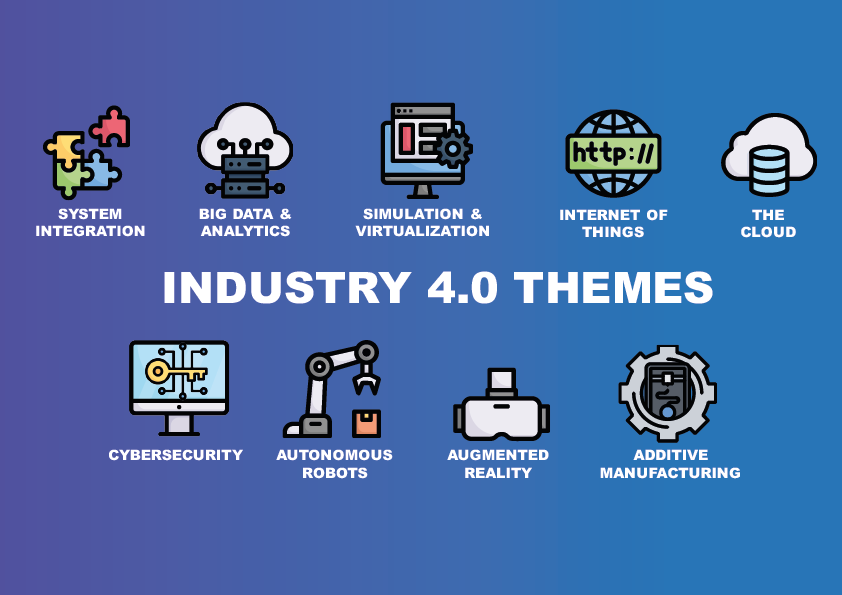Bionic Estimating: People, Process & Tech Power
If you’ve ever listened to our podcast, you’ll know that we’re a big believer in the power of being a Bionic Business – a business that places equal importance on its People, its Processes, and its Technology. And during a recent podcast episode where we discussed the challenges faced by estimators, we realised just how much these bionic principles applied to estimating!
Let me explain…
The importance of People in estimating
Technology is an incredibly important part of the estimating process, but does estimating software understand and consider factors such as the economy or changes in the market like humans can? No! Technology still needs us humans to inform it about this type of stuff.
While there are certain business rules that we need to follow when producing quotes (which is where estimating software comes in) you also need experience of the product and markets that you’re estimating for. When you’re quoting for a direct mail job, for example, you need to understand what’s going on in the direct mail market and how much value they place on the printed products they are interested in. And these products aren’t generic widgets that appear in a catalogue - you need a human being to work with the customer to develop those products and offer advice based on experience and manufacturing knowledge. The same thing can be said about wide format products – what kind of wall is your wall vinyl going on, what is your banner being fastened to, and so on. There are many sectors of the printing industry that require this product development in partnership with the customer, and so a lot of specialist human knowledge is required.
During the estimating podcast episode I mentioned earlier, my guest Chris Smyth, Strategic Performance Director at BCQ backed up this point, saying, “The products that BCQ are selling aren’t hugely commoditized and so there’s a certain amount of commercial acumen required to work out the pricing strategy. You need to know what the market is like, what the previous prices were, and what other external factors are going on that we need to take into account when pricing. There are a lot of things in print that can be standardized and automated, but pricing needs to have more flexibility. There just has to be a trade-off between flexibility and standardization when you’re pricing for print”.
My second guest on the episode, Matt Cummings, Operations Director from Elle Media, also made a very good point about the need for creating human relationships within your supply chain. He said, “You can’t underestimate the importance of a good supply chain for a quote. You need to have good relationships with your outworkers – they are there to support you and help you win that work, so that they win it too. So your estimators need to be proactive at creating relationships with these outworkers, and work out as many price agreement matrixes as you can, so you can give a price back immediately without waiting on anyone else.”
The importance of Process in estimating
Conversion rate analysis – the process of analysing your Value Added and Contribution percentages for each job you’re quoting for is incredibly important to maintain profitability. In fact, it’s such an important topic, that I’ve written a separate article about it which is inspiringly titled, “The importance of analysing your estimating conversion rates”.
Collecting the right information for your quotes – estimating software is fantastic for creating fast quotes, but if you don’t have the right information to create that quote, it’s obviously not going to be accurate. So estimating departments need to put processes in place to collect this information. Chris Smyth told me about the RFQ process they have in place at BCQ, “There’s always the challenge of getting the right information… but getting quotes through the RFQ system is good because we can immediately see… have we got capacity, do we have a backlog, what things are going in and what’s going out, to help with resource planning.”
Selecting the right estimator for the job - Print businesses that serve multiple markets with a variety of products, often have more than one estimator, and so it’s important to create a process for assigning the relevant products/markets to the relevant estimator. Some companies we have spoken to have developed their RFQ process to distribute certain products and markets to the estimators with the most relevant experience. Coming back to the experience of Chris Smyth, he describes how BCQ have even developed an email tagging process that allows sales reps out on the road to send an RFQ to the correct team by adding a tag in the email. An impressive use of technology! Which brings us to our final pillar of the Bionic Business…
The importance of Technology in estimating
This is the easiest pillar for me because, when I’m not being the much-admired and highly-praised host of the INKspire podcast 😉 I spend my days helping customers buy the right technology to help them automate and digitize their estimating function, along with the rest of their business workflow.
Using the Tharstern MIS as an example of what estimating software can bring to a printing company, let’s take a look at some of the achievable benefits:
- Ensures your pricing stays consistent using pre-defined product types and production routes.
- Captures the knowledge of your estimating and production team
- Digitizes complex and time-consuming processes, freeing them up to work on the added value activities that provide a great customer experience.
- Automatically compares costs and pricing between all the available methods of production and then presents all the different solutions available along with a recommendation based on your business goals.
- Allows users with limited experience of print to calculate accurate estimates based on your pricing policies and preferred production route.
- Gives you the ability to 'teach' the estimating software your company's imposition rules, so it automatically selects the imposition that your production team would have chosen manually.
And that’s just MIS software – I’m sure I don’t have to delve into all the other types of software that is available to help printing companies create estimates, but if you’d like to read more, you can head over to our technology guide for printers.
So there you have it – how being a Bionic Business that places equal importance on its People, Processes and Technology can help overcome the challenges that printing companies face in estimating.
If you’d like to hear the full podcast episode on estimating that I mentioned above, you can head to our INKspire podcast page.
Share this
You May Also Like
These Related Stories

Is industry 4.0 relevant for my print business?
